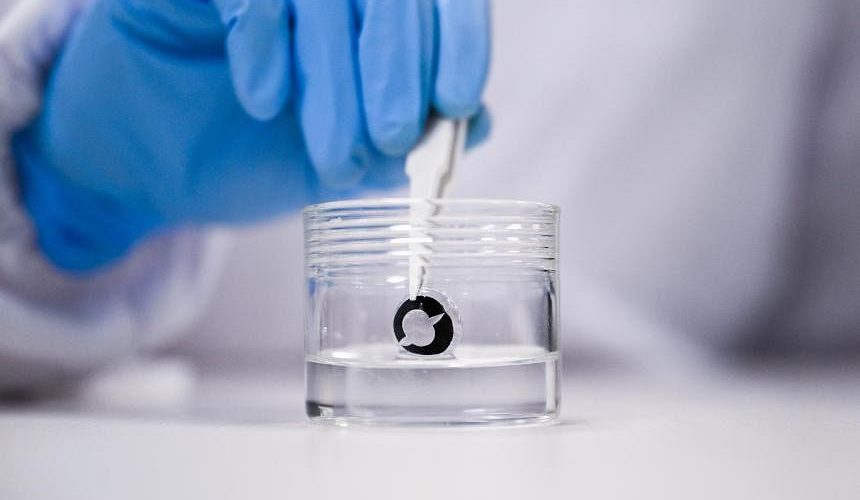
Scientists from Nanyang Technological University (NTU) in Singapore have made a significant breakthrough in the development of smart contact lenses. The team has created a saline-powered battery that is small enough to fit under a lens, bringing us one step closer to the futuristic technology seen in movies like Mission Impossible and Black Mirror.
The battery, which is as thin as a human cornea, stores electricity when immersed in a special saline solution. Associate Professor Lee Seok Woo, who has been working on the project since 2019, explained that the battery cells are coated with glucose, which reacts with the sodium and chloride ions in the saline solution to generate an electric charge. This charge powers the battery, similar to the technology used in batteries for wearables that are powered by human perspiration.
One of the key challenges in developing smart lenses has been the weight and circuitry of the devices. However, the design of this new battery overcomes these obstacles, making it possible for daily wear in the future. The battery is embedded along the sides of a soft lens to ensure that vision is not obstructed.
Early tests have shown promising results. The battery can power a smart lens and continuously send a signal to a smartphone via Bluetooth for 12 hours. It can also be charged up to 200 times, with ongoing efforts to further improve its performance.
Importantly, the lens is safe to wear as it does not contain any metals. It relies on glucose and water to generate electricity, making it biocompatible and not harmful to humans. The team conducted tests on mammal cells, which showed no deterioration when in contact with the lens, indicating its safety.
While there is still work to be done before human trials can take place, the team has filed a patent through NTU’s innovation and enterprise arm, NTUitive, and is actively working towards commercializing this groundbreaking invention.
The development of smart contact lenses has long been a subject of fascination, and this breakthrough brings us closer to the realization of augmented reality in our everyday lives. With further advancements and safety checks, we may soon see the integration of technology and vision in a whole new way.

